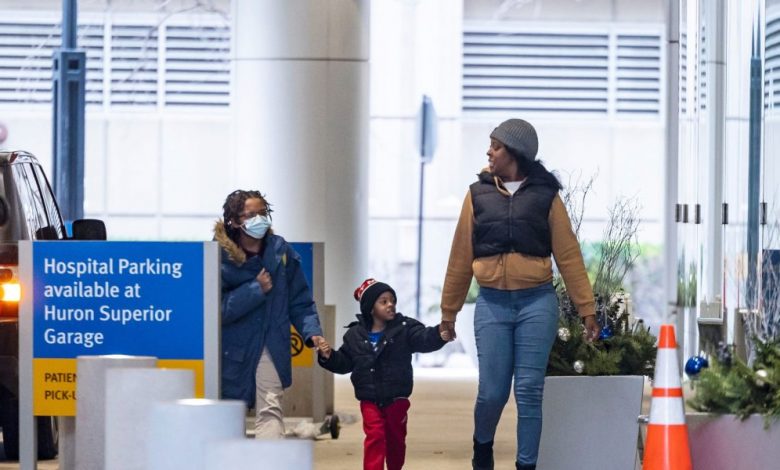COVID, burnout and drug shortages: Children and parents are paying the price for medical system dysfunction

Every time I walk into my children’s pediatric office in Manhattan, I feel a deep sympathy. The place seems to be understaffed, everyone works 24/7 and our children’s needs continue to increase.
What pediatricians have done for our children over the past three years as the pandemic raged on and children continued to be overlooked for vaccines and other cures is nothing short of miraculous. However, as a society we ignore pediatric health to the detriment of parents, children and medicine as a whole.
In my role as CEO of a pediatric telemedicine platform, I have sadly seen the system continue to fail our parents at an alarming rate. I am constantly reminded of the countless hours parents spend away from work each year caring for a sick child.
I see schools closing because 32% of the school population has the flu. And I think of the impossible compromise parents have to make between providing urgent medical care, which averages $2,032 per visit, or feeding their families.
Healthcare systems do not find pediatric care lucrative and are downsizing pediatric units and practices
Children’s hospitals, children’s emergency room floors, and pediatric emergency surgeries are shrinking at an alarming rate. This is a phenomenon that began well before the pandemic.
The American Academy of Pediatrics estimates that between 2008 and 2018, pediatric inpatient units shrank by nearly 20%. The pandemic exacerbated this trend as hospitals converted children’s floors into emergency care centers for adults to treat elderly patients for COVID.
The unfortunate reality is that it comes down to the economy. Healthcare systems are realizing that they can generate more income from a bed filled with an elderly patient or an adult than with a child. As a result, parents in rural areas are forced to drive across state lines or for up to eight hours to get ongoing medical care for their children. This phenomenon arises from the fact that Medicaid and CHIP reimbursement rates for children, which cover over 40% of children in the US, are lower. Also, adults undergo more expensive tests and procedures.
COVID and cutbacks have put an immense strain on the medical system
The past three years have put enormous strain on the healthcare system, resulting in a shortage of hospital beds and providers. As we look toward a likely downturn, economic headwinds have made it difficult for many hospitals and healthcare providers to recover financially from the strains they have faced during the pandemic.
Coupled with the reduction in pediatric availability, children suffer disproportionately from common diseases, particularly RSV and the flu, because they have not been exposed to them in the past two winters. Infections are up over 30% this year – and we face shortages of pediatric formulations of key drugs like acetaminophen, ibuprofen, amoxicillin and Tamiflu to treat respiratory diseases. Due to the lack of hospital beds and the fatigue of doctors, the system is unable to meet the demand from parents who want to take care of their children.
Nearly 20% of Americans have delayed some form of medical care during the pandemic. As a result, the system remains overwhelmed as these conditions worsened and people decided they needed to catch up on missed healthcare.
A looming mental health crisis is affecting children and carers
The mental health crisis among teenagers is nothing new. Teenage suicide rates have steadily increased over the decade between 2010 and 2020. However, the pandemic has amplified this trend. The inability to see friends, increasing inequality, lack of child care and health problems place an irreversible burden on children and parents.
Visits to emergency departments for pediatric mental health problems increased by 24% for children ages 5 to 11 and by 31% for children ages 12 to 17, also creating a backlog in our emergency medical system.
Doctors have joined the Great Resignation
Physicians are beginning to feel the effects of three years of uninterrupted work on the front lines. No wonder that every fifth doctor wants to resign by the end of 2023. Paediatricians in particular suffer from enormous burnout: Over 61 percent state that they have felt burned out in their function in the last three years due to a constant state of panic.
The crisis in pediatric care is inevitable. The system cannot maintain the mismatch between the supply and demand of paediatricians for their sick children. With fewer options, parents are forced to turn to more expensive care options, including going to the emergency room or emergency room.
I remain optimistic. New solutions and technologies can offer both immediate access to healthcare and a more sustainable work environment for paediatricians. By focusing on innovation, we can ensure the health and well-being of the next generation while preserving the sanity of their parents.
Ellen DaSilva is the Founder and CEO of health in summerwhich offers a message-based pediatric medical service, and co-author of Pitching & Closing: Everything you need to know about business development, partnerships and important deals.
The opinions expressed in Fortune.com comments are solely the views of their authors and do not necessarily reflect the opinions and beliefs of wealth.
More must-read comments posted by wealth:
Our new weekly Impact Report newsletter explores how ESG news and trends are shaping the roles and responsibilities of today’s leaders. Subscribe here.



